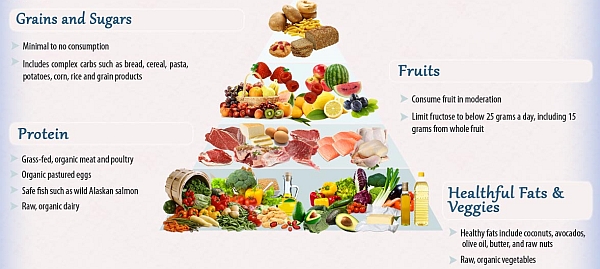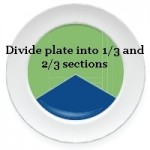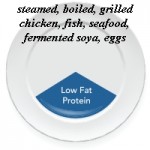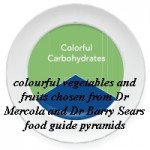with thanks to getye 1 at sxc.hu for the free photo
What do abdominal fat, elevated cholesterol, high blood pressure, type-2 diabetes mellitus, cardio-vascular disease, and arthritis have in common with pyramids?
The answer: all six conditions are the eventual result of year-in-year-out food pyramid choices.
The original USDA food pyramid in 1992, according to some observers, had more to do with promoting the financial well-being of American farmers than the health well-being of the population.
At the base of the pyramid was the recommendation to eat up to 11 servings of dense carbohydrates every day. Foods such as bread, pasta, pizza, maize, potatoes, and rice. Also, dry beans featured in the protein section. Beans do contain some protein, but it comes wrapped in a package full of dense carbohydrate.
The main type of carbohydrate in each of the foods at the base of the pyramid is starch. As you will see if you look on Wikipedia, starch is composed of long chains of glucose molecules.
Picture it as a necklace of beads, with each bead representing a glucose unit.
In the intestines, enzymes break the necklace into smaller and smaller pieces. Eventually, the necklace has been broken into its separate beads, and each bead (glucose unit) is ready to be absorbed into your blood stream.
Some of all those “beads” of glucose are used by your cells. And depending on how active you are after your meal, some are used by your muscles. If all the “beads” are not used, they’re converted to fat and stored.
Although glucose is a great source of energy, it can be detrimental if it goes above a certain level. Receptors in our bodies are constantly measuring the amount of glucose in our blood, and adjusting the amount to keep it within a safe range.
If there’s not enough glucose for energy, your liver gets a signal to release some.
If there’s too much glucose, your pancreas gets a signal to make a storage hormone to take the excess glucose out of your blood stream. Some is converted to glycogen and stored in your muscles and your liver. When those stores are full, the glucose is converted to fat and stored on the hips, thighs, and abdomen.
The storage hormone made by the pancreas is insulin.
Your next meal may be starch based, and possibly the one after that, as well. Add the between-meal-snacks, and the sugar-laden drinks, and your pancreas has a very busy day trying to make enough insulin to keep up with the demand for dealing with the influx of all those “beads” of glucose.
Over a period of years, eating an abundance of starch-laden foods, with the resultant over-production of insulin, leads to insulin resistance, metabolic syndrome, and eventually to type 2 diabetes. And along the way, all the other so-called lifestyle diseases.
That’s because insulin is not only a glucose control hormone. It’s a hormone with many other activities. Here are some of the systems it influences:
- fat storage (obesity, and apple-shaped abdominal bulge)
- tension of the arteries (increased blood pressure)
- cholesterol production (elevated “bad” LDL cholesterol, decreased “good” HDL cholesterol)
- inflammation (arthritis, cardio-vascular disease, type 2 diabetes, wrinkles and aging appearance)
There is a world-wide epidemic of obesity, diabetes, high blood pressure, arthritis, and elevated cholesterol. Could the diseases possibly be related to the recommendation to eat from 6 to 11 servings of starch-laden, insulin-stimulating, grain-based foods every day?
In his book, The Omega Rx Zone, Dr Sears wrote: “In retrospect, the USDA Food Pyramid was virtually guaranteed to increase insulin levels in Americans. In that regard, it has been an outstanding success. We now have higher insulin levels and an epidemic increase in obesity throughout the country.”
As a result of mounting medical evidence, the USDA’s first food guide pyramid of 1992 was replaced in 2005 with MyPyramid, and again in 2011 with MyPlate.
But does it go far enough? MyPlate is divided into sections of approximately 30 percent grains, 30 percent vegetables, 20 percent fruits and 20 percent protein, accompanied by a smaller circle representing low-fat/no-fat dairy.
At least half the grains should be whole grains, they say. That means natural grains that have not been processed and stripped of nutrients. Whole rolled oats, whole wheat, whole rye, and whole natural rice. But where do you buy them?
And if you are lucky enough to find them in your favourite supermarket, can you afford to pay the often-hefty extra price? Surely, most families will buy the starch foods that are readily available and affordable… white bread, white rice, white pasta, white potatoes.
MyPlate appears to be stuck in the old dogma of the low-fat-and-lots-of-grains diet, albeit with reduced portions of starchy carbohydrates. Unfortunately, this approach has done nothing to stem the continually-rising tide of obesity, heart disease, and diabetes. That’s because fat is not the villain: starch is the villain.
alternative food guide pyramids…
Two experts on the effects of the food we eat are Dr Barry Sears, and Doctor Mercola. Both have published food pyramids that emphasise leafy vegetables, with lean meat and fish, fruits, and some good fats (olive oil, nuts, avocado).
Unlike the USDA version, grains and other dense carbohydrates are relegated to the very small top section of their pyramids, to be eaten sparingly, or preferably, not at all.
Click here to read Dr Mercola’s eye-opening articles about the USDA’s food pyramids and their effects on your health.
the Zone…
Dr Barry Sears is well known for his Zone Diet. It’s not a diet you follow for a couple of weeks, so you can squeeze into your summer bikini… and forget as soon as summer is over.
The Zone is about choosing foods that keep you at your correct weight, healthy and vibrant, looking good, for the rest of your life. No wonder Dr Barry Sears’ Zone books have sold over 5 million copies.
Here’s an excerpt from Dr Sears’ ZoneDiet website…
Quote:
“What Are the Food Ingredients Used in the Zone Diet?
The primary ingredients are low-fat protein, colorful carbohydrates rich in polyphenols [a class of antioxidants], and fat that is low in both saturated fat and omega-6 fats.
The secret is balancing these ingredients to get the appropriate hormonal responses at each meal. The less white (white bread, white rice, white pasta, and white potatoes) you put on your plate, the less cellular inflammation you are going to create.”
Dr Barry Sears’ Zone food pyramid…
As we saw earlier, insulin influences several of our bodies’ systems and, when constantly elevated, is an important contributor to the so-called lifestyle diseases plaguing society.
All the diseases have inflammation as their common denominator.
The Zone is a way of ensuring your body makes less of the biochemical substances that stimulate inflammation, and more of the biochemical substances that dampen inflammation.
Dr Barry Sears has a doctorate in biochemistry, so he knows exactly how the systems in our bodies work. For over 30 years he has been researching the mechanisms of inflammation at the cellular level, and how to control it with proper food choices, combined with omega 3 supplementation.
His food pyramid and food choices are the result of all those years of research. If you follow his advice, you will get all these benefits of being hormonally balanced in the Zone:
- lose body fat, especially abdominal fat, and keep it off
- lower and balance your cholesterol
- reduce your risk of diabetes
- reduce your risk of heart disease
- improve sore joints
- increase your energy levels
- slow down wrinkle formation and look younger than you are
Next time you sit down to a main meal, have a healthy plate-full like this:
1. Mentally divide your plate into 1/3 and 2/3 sections
2. Put lean protein, the size and thickness of the palm of your hand, on the 1/3 section
3. Cover the remaining 2/3 with as many colourful and green leafy vegetables as you can eat
4. Sprinkle a little good fat over the vegetables (virgin olive oil, chopped almonds, or avocado)
5. Season to taste with Himalayan salt, freshly-milled pepper, if required
6. Take your omega 3 supplements with a glass of water
7. For desert, some low-sugar fruit (banana and other tropical fruits are often high in sugar)
8. Enjoy your balanced meal
the meal test…
You will know if your last meal was a balanced meal, by the way your body performs in the hours after you have eaten it. Are you sleepy, starving, or alert?
Here’s the self-explanatory guide available on one of Dr Barry Sears’ websites, which shows the adjustments you may need to make at your next meal…
more useful info…
1. Dr Mercola’s health website. Sign up for his free newsletter. Take his free nutritional test and download the right eating plan for your type.
2. Download the article in the Time Magazine February 2004…”Cellular Inflammation: The Secret Killer”
3. Dr Barry Sears continues his research into the dietary control of inflammation, and has established the non-profit Inflammation Research Foundation.
4. Dr Barry Sears’ anti-inflammatory health website and blog.
5. Zone books by Dr Barry Sears available at good prices on Amazon.













Is care anti infection solution one of GNLD product
Hi Deb.
Thanks for visiting.
Yes, Care is a disinfectant in the Golden Home Care range.
You can read about it at this page.
Best wishes,
David.